Download these resources and explore the accompanying guidelines to help undergraduate chemists at your institution develop valuable business and entrepreneurial skills
Boost your students’ employment prospects and support them to develop their business skills using these downloadable resources with notes for tutors. Designed to be used flexibly within a variety of course structures, the materials cover three key topics:
- Business for chemists introduces students to a range of chemistry-related industries and covers the fundamentals of business. Case studies give students the opportunity to practise their skills, and include a visit to a company using chemistry in their core operations.
- From bench to bank focuses on innovation and commercialisation, featuring short presentations, group work and the opportunity for students to develop and pitch an idea for a product solving a real-life problem.
- Intellectual property familiarises students with the concept of intellectual property and it may be protected by patents, with case studies addressing some of the factors that must be considered when attempting to patent a new discovery.
You can also find useful supporting documents and guidance to help you set up the course.
Using the resources
Each topic includes an overview and objectives, with presentations, lecture notes, handouts and guidance documents available to download.
Use the links provided with each resource (eg ‘Basic rules of business’ lecture) to download the files you need.
Guidance on course structure
The materials below are designed to enable the content to be tailored to different courses, timetables and institutions.
However, you will notice that some of the materials refer to an example course in which content is organised as a single 10 credit module comprising five sessions, each lasting four hours. This is for illustrative purposes only, and can be modified according to your requirements.
For more information and guidance on how to implement this course, see the supporting documents provided.
1. Business for chemists
This topic comprises two lectures and a variety of case studies, designed around three core objectives:
- To understand the structure, history and challenges facing chemistry-using industries, including the types of business and sectors involved, the principal drivers and their role in UK and internationally.
- To understand the basic rules of business, including selling skills, customer awareness and financial skills.
- To understand the role and function of each unit within a typical chemistry-using business, from sales and marketing, finance and production to QA, delivery, R&D, legal and HR.
Guidance for tutors
This topic can culminate in a visit to the site of a chemistry-using business. Download the guide on how to set up a site visit below to find out more.
1.1. ‘An introduction to the chemistry-using industries’ lecture
Download this PowerPoint presentation for the first lecture in this topic. The lecture discusses the role of chemistry in the UK and global economies, and the current challenges facing chemistry-using industries.
1.2. ‘Basic rules of business’ lecture
Use this Powerpoint presentation to support a lecture introducing key concepts and skills required to work in business, from business plans, project management and SWOT analysis to market need, finance and investment.
Case studies of market need and cost, price and value are included with the presentation, and can be worked through in the natural flow of the lecture.
Note
Optional case studies for SWOT analysis and business finance are also available for download below.
1.3. Business plan template
Share this sample business plan with your students during the ‘Basic rules of business’ lecture to help illustrate how a business plan may be laid out.
Download
1.4. SWOT analysis case study
Use this PowerPoint presentation to set up a SWOT analysis case study, which may be included in the ‘Basic rules of business’ lecture.
1.5. Business finance presentation and case study
Explore key topics concerning business finance using this PowerPoint presentation. The presentation also includes a case study which introduces students to key financial documents such as balance sheets, profit and loss statements and cash flow forecasts.
1.6. Setting up the finance case study
Use this guide, including handouts for students, to set up and run the finance case study.
Download
1.6. ‘How to set up a site visit’ guide
This document explains how to arrange a site visit. It includes a sample timetable and a sample code of conduct for students to sign.
Download
2. From bench to bank
This topic is run as a series of workshops, with the objective of building students’ creative thinking skills as they develop and communicate a new product concept.
Guidance for tutors
The activities in this topic draw on the ‘Ingenuity’ system, a concept developed by the Business School at the University of Nottingham to help students identify and define the root causes of a problem, generate multiple solutions to the problem and then select the best way to solve it.
Throughout this topic, students use the ‘Ingenuity’ system to develop a commercially viable solution to a societal, economic or environmental problem, before presenting it in a ‘Dragon’s Den’ style competition.
Students should be divided into groups of about four. They should together in the workshop sessions to develop their ideas and plan their business pitch. Ideally, the topic should be divided into three workshop sessions and one presentation session.
The ‘Ingenuity’ lecture, available for download below, can be given in three parts – one for each of the ‘Ingenuity’ cards. Each lecture can then be followed up by a group workshop session supervised by the lecturer.
Download notes
The presentations and handouts included with this topic are designed to help guide students through the ‘Ingenuity’ process, and a gallery of photographs is included to help tutors see how the course was run at the University of Nottingham.
An additional presentation is provided to introduce the concept of the ‘Dragon’s Den’ style business pitch, along with various documents to help run the final session.
2.1. ‘Ingenuity’ lecture
This PowerPoint presentation explains the ‘Ingenuity’ process in relation to innovation and product development. It is divided into three parts, one for each of the three cards used by the ‘Ingenuity’ system, which should each be presented at the start of one of the workshops.
2.2. ‘Ingenuity’ handouts
Use the handouts in this download to provide space for students to answer questions from the red, yellow and green cards in the lecture presentation.
Download
2.3. Example workshop
The photos in the gallery below illustrate how the workshop sessions were run when this course was first delivered at the University of Nottingham.
You may find it helpful to share the images with students when explaining what they need to do.
2.4. Business pitch introduction
Use this PowerPoint presentation to introduce the idea of the ‘Dragon’s Den’ style business pitch to the students. The talk should be given at the end of the third workshop session.
2.5. Business pitch tutor’s guide
This guide explains how to organise and run the final session of this topic, in which students rehearse and deliver their business pitches in front of a judging panel.
Download
2.6. Business pitch student handout
Download this handout to help explain to students how the final session will be run and what their business pitches should include, using the advice about how to deliver a good pitch.
The handout should be given to the students at the end of the third workshop session.
Download
2.7. Business pitch mark scheme
Check this document for guidelines on how the ‘Dragon’s Den’ style business pitches should be marked. It should be given to any members of staff acting as ‘Dragons’ before they attend the final session.
Download
3. Intellectual property
This topic combines an introductory lecture with a video interview and case study, with the following objectives:
- To introduce the concept of intellectual property and how it can be protected.
- To understand patents, design rights and copyright and learn how to extract key information from chemistry patents.
- To understand trade secrets, confidentiality agreements and ownership of IP, and explore how intellectual property rights can be valued and traded through licensing, assignment etc.
In the first part of the topic, students learn about intellectual property, focusing on patents. They begin with a lecture on IP, before watching an interview with intellectual property lawyer Rachel Oxley.
The second part of the topic centres on a case study, in which students work through the patenting of a hypothetical chemistry-related invention.
Guidance for tutors
You may wish to use the case study presentation in combination with the handouts provided, in order to to allow students to attempt the questions individually before they are discussed as a group.
The case study can also be enhanced by using an audience voting system to allow the students to participate directly.
3.1. ‘Intellectual property’ lecture
This PowerPoint presentation was written by an intellectual property lawyer and introduces the concept of intellectual property and patents.
3.2. Ask Rachel
In this video interview, intellectual property lawyer Rachel Oxley discusses a range of key questions and issues relating to her work. Note: students can access the videos from student course resources.
About Rachel
Intellectual property
Patents
Money
3.2. ‘Intellectual property’ case study
This PowerPoint presentation contains the intellectual property case study. Note: the use of an audience participation system is recommended.
3.3. Case study background handout
Use this handout to share the background information provided in the case study presentation. The handout can be distributed to students during the presentation so that they can check the details of the background story throughout.
Download
3.4. Case study questions handout
This handout contains all of the questions from the case study, with options for each of the answers. It can be given to students in the absence of an audience participation system, so that the students attempt the questions individually throughout the presentation.
Download
4. Additional guidance and resources
The documents in this section are designed to help you set up and run a course using the resources from Business Skills for Chemists. From a sample teaching plan to a ‘learning log’ for students, use or adapt these materials to tailor the course to your institution.
4.1. ‘Setting up a business skills course’ guide
Download this document for guidance on how to set up a Business Skills for Chemists course.
Download
4.2. Sample teaching plan
Build an effective teaching plan for the course using this example, with notes on how the different topics may fit together.
Download
4.3. Sample poster
Check out this poster to see how the Business Skills for Chemists course was advertised at the University of Nottingham.
Download
4.4. Sample registration form
Use or adapt this sample form to collect information from students wishing to register for the course.
Download
4.5. Sample programme
This programme may be tailored to your course and handed out to students in advance.
Download
4.6. Sample learning log
Try using this learning log to assess how students’ business skills have developed over the duration of the course.
Download
Downloads
Introduction to the chemistry-using industries presentation
Presentation | PowerPoint, Size 2.17 mbBasic rules of business presentation
Presentation | PowerPoint, Size 1.88 mbBusiness plan template
Editable handout | Word, Size 1 mbBusiness plan template
Handout | PDF, Size 48.62 kbSWOT case study presentation
Presentation | PowerPoint, Size 0.19 mbFinance presentation
Presentation | PowerPoint, Size 1.43 mbSetting up the finance case study
Editable handout | Word, Size 1.04 mbSetting up the finance case study
Handout | PDF, Size 77.9 kbHow to set up a site visit
Editable handout | Word, Size 1.02 mbHow to set up a site visit
Handout | PDF, Size 77.14 kbIngenuity presentation
Presentation | PowerPoint, Size 4.53 mbIngenuity card questions
Editable handout | Word, Size 1.01 mbIngenuity card questions
Handout | PDF, Size 79.17 kbBusiness pitch introduction
Presentation | PowerPoint, Size 0.75 mbBusiness pitch tutor guide
Editable handout | Word, Size 1.01 mbBusiness pitch tutor guide
Handout | PDF, Size 59.42 kbBusiness pitch student handout
Editable handout | Word, Size 1.01 mbBusiness pitch student handout
Handout | PDF, Size 70.08 kbBusiness pitch mark scheme
Editable handout | Word, Size 1.02 mbBusiness pitch mark scheme
Handout | PDF, Size 61.54 kbIntellectual property presentation
Presentation | PowerPoint, Size 2.97 mbIntellectual property case study presentation
Presentation | PowerPoint, Size 0.72 mbIP case study background handout
Editable handout | Word, Size 1.01 mbIP case study background handout
Handout | PDF, Size 57.5 kbIP case study questions handout
Editable handout | Word, Size 1.03 mbIP case study questions handout
Handout | PDF, Size 77.76 kbSetting up a business skills course guide
Editable handout | Word, Size 1.06 mbSetting up a business skills course guide
Handout | PDF, Size 66.09 kbSample teaching plan
Editable handout | Word, Size 1.05 mbSample teaching plan
Handout | PDF, Size 88.6 kbSample business skills course poster
Editable handout | Word, Size 0.16 mbSample business skills course poster
Handout | PDF, Size 0.12 mbSample registration form
Editable handout | Word, Size 1.06 mbSample registration form
Handout | PDF, Size 0.12 mbSample programme
Editable handout | Word, Size 1.06 mbSample programme
Handout | PDF, Size 0.15 mbSample learning log
Editable handout | Word, Size 1.04 mbSample learning log
Handout | PDF, Size 0.1 mb
Additional information
This resource was originally published in 2012 as part of the Business Skills for Chemists website. It was developed by the University of Nottingham in association with the Royal Society of Chemistry, and funded by the National HE STEM Programme.
Business Skills for Chemists

Develop key business and entrepreneurial skills using these course materials and self-study resources for undergraduate chemistry students.
- 1
- 2
- 3
 Currently
reading
Currently
reading
Tutor course resources

















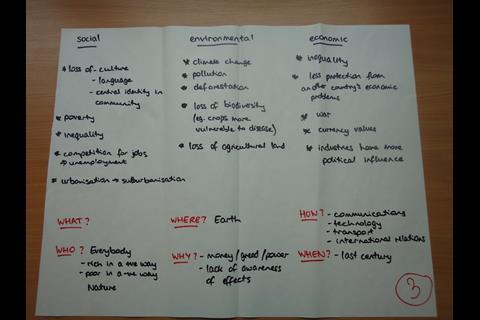
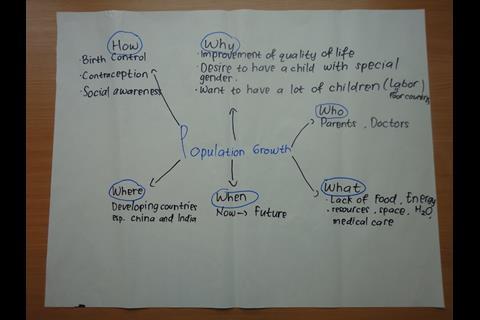
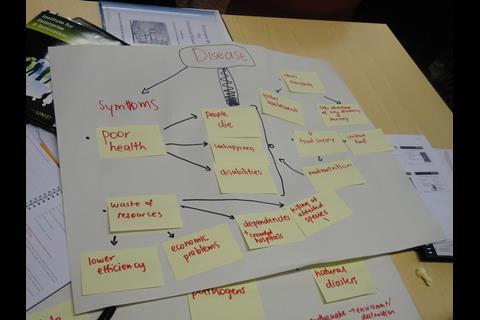
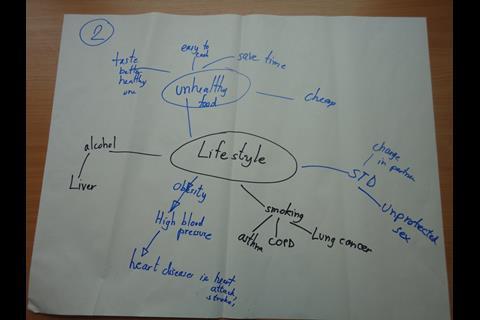

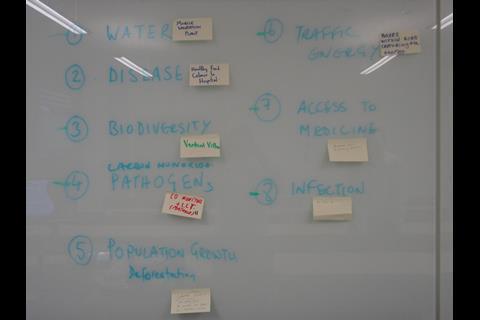
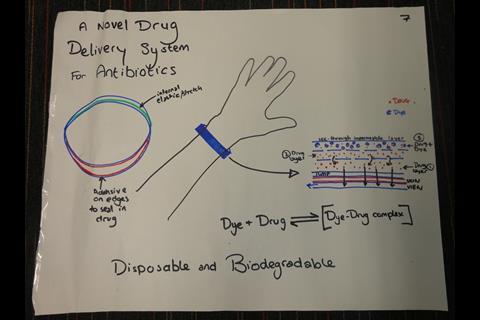

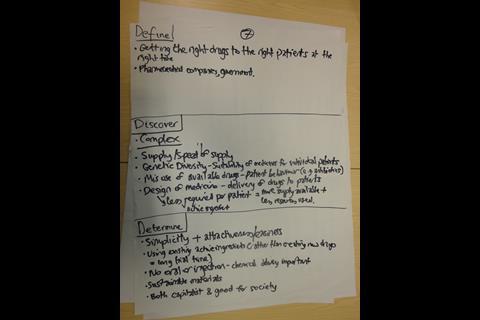

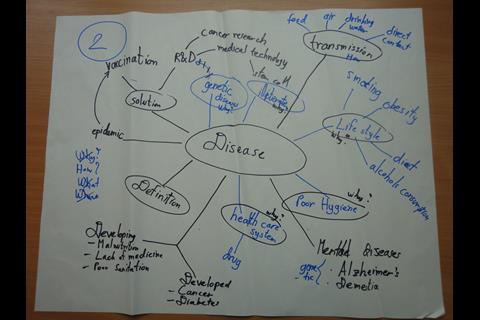









No comments yet